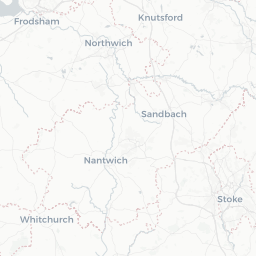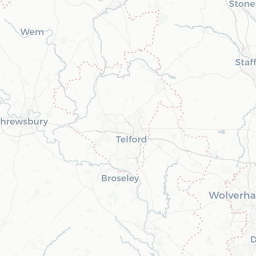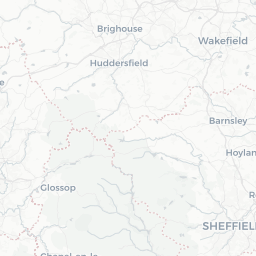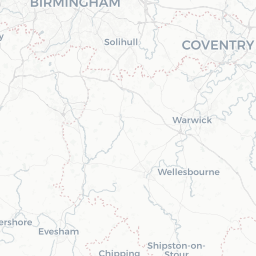SE11 (London)
London Postcode Area
London, the capital of the UK, offers a diverse tapestry of neighbourhoods, each with its own unique charm. From the historic streets of Greenwich to the trendy vibe of Shoreditch, there’s something for everyone. Excellent transport links, including the Tube and buses, make commuting a breeze. Enjoy an array of amenities, from bustling markets to peaceful parks. Famous attractions like the Tower of London and Buckingham Palace are never far away, ensuring a dynamic urban lifestyle that's rich in culture and history.
Overview
London (SE11) postcode district is located in the ceremonial county of Greater London, and is part of the London postal town.
SE11, located in the London Borough of Lambeth, is a vibrant and diverse area with a population density of 10,025.3 people per sq km. The average house price stands at £772,500, significantly higher than the UK average of £288,000. The area is predominantly residential, with 48.5% of homes being social rented. The average salary is £37,927, well above the national average. In terms of education, 53.7% of residents hold Level 4 qualifications or higher, indicating a well-educated community.
















People and Demographics
Demographics
SE11 is a lively area characterised by a diverse population. The average age of residents is 36.6, which is younger than the UK average of 40.7. The ethnic breakdown shows that 51.7% of the population is White, 26.2% Black, 7.6% Asian, and 7.9% Mixed. This diversity contributes to a rich cultural landscape, making SE11 an attractive place for various communities.
Unemployment
Percentage of people in London SE11 who are classed as being unemployed at Census 2021.
With an unemployment rate of 4% in London SE11, this postcode is slightly below the UK average of 4.3%, indicating a balanced local job market.
Such a rate suggests reasonable employment opportunities, contributing to a stable community where residents are more likely to invest in the area, supporting local businesses and fostering neighbourhood growth.
Diversity
Percentage of residents in the SE11 postcode region who identify as white.
With 56% of residents identifying as White in London SE11, this postcode has a diverse community with a slight majority of White residents.
The mix of different ethnic backgrounds adds to the neighbourhood's character, offering opportunities for cultural engagement and mutual understanding among residents.
Population Growth
Population growth means that the population of London SE11 is increasing by 3% each year.
Across the UK, (England, Scotland, Northern Ireland and Wales), the average population grown from 2023-2024 is 0.66%.
Children
Are under 18 years old
14% of London SE11 are under the age of 18 at the time of the Census 2021.
London SE11 aligns closely with the UK average of 17.4%. This indicates a balanced mix of families and other household types, with amenities catering to both children and adults.
Retired
Are enjoying retirement
11% of London SE11 are retired at the time of the Census 2021.
London SE11 aligns closely with the UK average of 16%, a mixed community of working-age individuals and retirees. Local amenities are likely to be diverse, and cater to both younger and older residents.
Census 2021 Demographics
Who lives and works in SE11?
Analysing the SE11 population's characteristics, including age distribution and cultural diversity, provides valuable insights into the composition of the community.
Population
Analysing the SE11 population's characteristics, including age distribution and cultural diversity provides valuable insights into the composition of a local community.
Demographics
SE11 is a lively area characterised by a diverse population. The average age of residents is 36.6, which is younger than the UK average of 40.7. The ethnic breakdown shows that 51.7% of the population is White, 26.2% Black, 7.6% Asian, and 7.9% Mixed. This diversity contributes to a rich cultural landscape, making SE11 an attractive place for various communities.
Population Growth
Population growth means that the population of London SE11 is increasing by 3% each year.
Across the UK, (England, Scotland, Northern Ireland and Wales), the average population grown from 2023-2024 is 0.66%.
Children
of London SE11 are under the age of 18 at the time of the Census 2021.
Retired
of London SE11 are retired at the time of the Census 2021.
Gender Ratio
51% female
Gender ratio in census data means the number of males for every 100 females in a population, helping us understand the balance between men and women in a specific area.
Age Distribution
are adults
Age distribution refers to how different age groups are spread within a population, showing the number of people in each age range. This helps understand the population's structure and potential needs.
Age Distribution
"Age Distribution by 5-year bands" in the Census 2021 breaks down the population into groups based on age ranges, each spanning five years (e.g., 0-4, 5-9, 10-14, etc.). This helps to see how many people fall into each age group, providing a clear picture of the age structure in an area.
Living Arrangements
"Living Arrangements" in the Census 2021 refers to people's relationship status and how they live with others. It includes whether someone is married, in a civil partnership, cohabiting as a couple, separated, divorced, or single, and whether they live with a partner, alone, or with others.
Legal Partnership
Legal partnership status of residents in the London (SE11) district, offering insights into the diversity of relationship statuses in the area. This dataset classifies residents aged 16+ in England & Wales by their partnership status.
Gender Identity
"Gender Identity" in the Census 2021 refers to how people personally identify their gender, which may or may not align with the sex they were assigned at birth. It includes options like male, female, non-binary, or other identities, reflecting how individuals see themselves.
Postcodes
Dig even deeper into the SE11 postcode:
Click on an postal code below for more information about the area. Each postcode give you a comprehensive overview of the postcode neighbourhood, including address, demographics, crime, transport, amenities and house prices in London (SE11).
Word Cloud for SE11
We've trawled social media and the web to discover words that describe the postcode district of SE11:
Nearby Towns & Cities
SE11 Postcode area
The following towns and villages can be found close to London SE11:
Westminster
Population 218,791
2.7 miles
Westminster, with its iconic landmarks like Big Ben and Buckingham Palace, offers a rich blend of history, culture, and vibrant city living, making it the perfect place to immerse yourself in the heart of London while enjoying a diverse range of amenities and attractions on your doorstep.
Nearest Postcode Areas:
London
Population 8,173,941
7.4 miles
The capital of England and most populous city in the United Kingdom, London stands on the River Thames, and has been a major settlement for two millennia. A metropolis of arts, culture, sport and entertainment are sure to delight all.
Nearest Postcode Areas:
Local Authorities
SE11 Postal Town
The SE11 postcode includes the following local authorities:
- Lambeth
- Southwark
Crime in SE11
How safe is this postcode sector?
Crime levels in the SE1 postcode area have been a concern for residents and local authorities. Recent statistics show that there has been a slight increase in overall crime compared to previous years. Key hotspots for criminal activity include areas around Borough Market, South Bank, and Elephant and Castle.
Key Hotspots
Borough Market has been a target for theft and pickpocketing, especially during peak tourist seasons. The South Bank area has also seen a rise in anti-social behaviour and drug-related crimes. Elephant and Castle has been known for its street robberies and violent incidents.
Historical Crime Issues
The SE1 postcode area has a history of crime, with notable issues such as gang violence and organised crime. In the past, there have been cases of drug trafficking, burglary, and assault in the area. The close proximity to central London and major transport hubs has made the SE1 postcode a target for criminal activities.
Current Policing Priorities
The local police force in the SE1 postcode area has set priorities to address the rising crime levels. Their focus is on increasing patrols in key hotspots, working closely with local businesses to improve security measures, and engaging with the community to gather intelligence on criminal activities. Additionally, efforts are being made to tackle drug-related crimes and anti-social behaviour in the area.
the SE1 postcode area continues to face challenges in maintaining public safety and reducing crime rates. It is essential for residents to remain vigilant and report any suspicious activities to the authorities. By working together with the police, the community can help create a safer environment for everyone.
Sources:
UK Police Data
Metropolitan Police
Education
Highest Rated Schools in SE11
As rated by Ofsted
- Archbishop Sumner Church of England Primary School
Reedworth Street, London, SE11 4PH
Outstanding - Henry Fawcett Primary School
Bowling Green Street, London, SE11 5BZ
Outstanding - Lilian Baylis Technology School
323 Kennington Lane, London, SE11 5QY
Outstanding - Octavia House Schools, London
214b Kennington Road, London, SE11 6AU
Outstanding - King's College London Maths School
80 Kennington Road, London, SE11 6NJ
Outstanding - Charlotte Sharman Primary School
St George's Road, London, SE11 4SN
Good - Vauxhall Primary School
Vauxhall Street, London, SE11 5LG
Good - St Mark's Church of England Primary School
Harleyford Road, London, SE11 5SL
Good - Walnut Tree Walk Primary School
Walnut Tree Walk, London, SE11 6DS
Good - St Anne's Catholic Primary School
6 Durham Street, London, SE11 5JA
Requires improvement

Unlock the full power of postcode insights.
Data is meaningless without context. Reveal the stories behind a neighbourhood, and make smarter decisions with data you can trust. Gain unlimited access to detailed statistics, exclusive reports, and essential tools.
PostcodeArea is grateful to our sponsors for their support.






